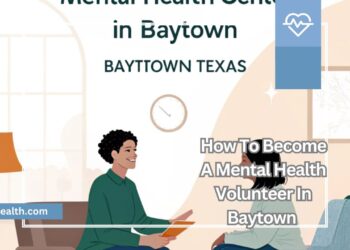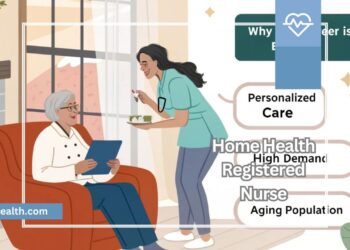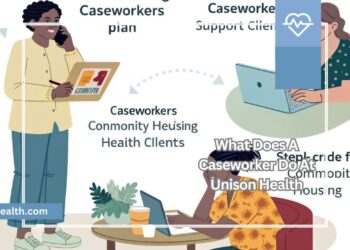Mental health is a vital part of well-being, yet it remains widely misunderstood. The language we use shapes how we perceive, discuss, and address mental health challenges. Whether you’re a professional, someone facing struggles, or a supportive loved one, understanding mental health terminology improves communication and support.
By using the right words, we can break stigma, encourage open conversations, and foster a compassionate society. Misusing or misunderstanding terms can spread misinformation, making it harder for people to seek help. Learning correct terminology is essential for raising awareness and promoting empathy.
Why Mental Health Terminology Matters?
Language shapes perception. The way we talk about mental health can either reduce stigma or reinforce harmful stereotypes. Using the right terminology allows for more productive conversations, better access to support, and increased awareness.
For example, saying someone “is bipolar” versus saying they “have bipolar disorder” makes a huge difference. The former defines the person by their condition, while the latter recognizes it as just one aspect of their life.
As someone who has struggled with anxiety for years, I know firsthand how powerful words can be. Being labeled as “overreacting” or “too sensitive” made me feel ashamed of my experiences, whereas being told I had an anxiety disorder gave me the validation I needed to seek help. This is why understanding mental health terminology is not just about words—it’s about compassion, respect, and support.
Defining Mental Health vs. Mental Illness:
Mental health represents emotional, psychological, and social well-being. It enables people to handle stress, work productively, and contribute to their community. Mental illness refers to diagnosable conditions affecting cognition, emotions, or behavior, like depression or schizophrenia. While everyone experiences mental health fluctuations, not all develop mental illness. Recognizing this distinction helps promote understanding and appropriate support systems.
Mood Disorders:
Depression (Major Depressive Disorder):
Characterized by persistent sadness and loss of interest lasting weeks or more. Symptoms include fatigue, sleep disturbances, and difficulty concentrating. It affects daily functioning and relationships. Various factors contribute including biological and environmental. Treatment typically involves therapy and/or medication. Early intervention improves outcomes significantly.
Bipolar Disorder:
Features alternating episodes of mania (elevated mood) and depression. Manic phases involve excessive energy and risky behavior while depressive phases mirror major depression. Mood stabilizers are common treatments. Proper management enables stable functioning. Genetic components play a significant role.
Anxiety Disorders:
Generalized Anxiety Disorder (GAD):
Chronic, excessive worry about everyday matters. Physical symptoms include muscle tension and restlessness. Unlike normal anxiety, it’s persistent and disproportionate. Cognitive behavioral therapy proves particularly effective. Often coexists with depression.
Post-Traumatic Stress Disorder (PTSD):
Develops after experiencing or witnessing trauma. Symptoms include intrusive memories and hypervigilance. Avoidance of trauma reminders is common. Evidence-based treatments include trauma-focused therapies. Not everyone exposed to trauma develops PTSD.
Also read: What Is S3 Health Benefit Card – Everything You Need To Know!
Psychotic Disorders:
Schizophrenia:
A severe mental disorder affects the perception of reality. Symptoms include hallucinations and delusions. Typically emerges in the late teens to early 30s. Antipsychotic medications help manage symptoms. Comprehensive treatment includes psychosocial support. Early intervention improves long-term outcomes.
Neurodevelopmental Disorders:
Autism Spectrum Disorder (ASD):
Characterized by social communication challenges and restricted interests. Symptoms appear in early childhood. Sensory sensitivities are common. Interventions focus on developing skills and accommodations. Each individual presents uniquely on the spectrum.
ADHD:
Features inattention, hyperactivity, and impulsivity. Affects academic and social functioning. Behavioral strategies and sometimes medication help management. Often continues into adulthood. Early diagnosis supports better adaptation.
Substance-Related Disorders:
Addiction (Substance Use Disorder):
Compulsive substance use despite negative consequences. Involves changes in brain chemistry. Treatment includes behavioral therapies and medication. Recovery is an ongoing process. Relapse doesn’t indicate treatment failure.
Harmful Use vs. Dependence:
Harmful use causes damage without dependence. Dependence involves tolerance and withdrawal. Both require intervention. Severity determines the treatment approach. Prevention and early intervention are crucial.
The Importance of Person-First Language:
The person-first language emphasizes the individual before their condition, reducing stigma. Instead of labels like “schizophrenic,” we say “person with schizophrenia.” This approach maintains dignity and recognizes the whole person. Similarly, “person with substance use disorder” replaces “addict.” Such language shifts promote respect and inclusion in healthcare, media, and everyday conversations about mental health.
Key Insight:
Mental health exists on a continuum where individuals move between states of well-being and distress. Even without clinical illness, people experience mental health challenges. Conversely, those with mental illnesses can achieve well-being with proper support. This spectrum concept helps normalize mental health discussions while recognizing when professional intervention becomes necessary for maintaining quality of life.
Also read: List Of 50 Words Associated With Mental Health – Improve Awareness & Break Stigma!
Key Insights on Mental Health Terminology:
- Mental Health Exists on a Spectrum: Mental health is not static; people fluctuate between well-being and distress. Even without a clinical diagnosis, individuals experience stress, anxiety, or emotional struggles. Recognizing this spectrum helps normalize discussions and encourages proactive self-care and early intervention.
Recovery is Possible: Mental illnesses are treatable, and individuals can lead fulfilling lives with the right support. Therapy, medication, and healthy coping strategies help manage symptoms. A strong support system and early intervention significantly improve recovery outcomes, promoting stability and resilience. - Education Reduces Stigma: Spreading mental health awareness fosters understanding and acceptance. Misconceptions lead to discrimination and fear, but education breaks these harmful stereotypes. Schools, workplaces, and media play a crucial role in promoting awareness and creating a more supportive society.
- Language Shapes Treatment and Perception: The words we use impact how professionals diagnose and treat mental illnesses. Using respectful, person-first language encourages people to seek help without fear of judgment. Thoughtful terminology promotes empathy, reducing stigma and fostering a compassionate healthcare environment.
- Supportive Conversations Improve Mental Health: Encouraging open discussions helps individuals feel heard and understood. Listening without judgment and offering emotional support fosters a compassionate environment. Mental health conversations should focus on hope, recovery, and resilience, empowering individuals to seek help when needed.
Challenges in Mental Health Terminology:
Misinformation and Stigma:
One of the biggest challenges in mental health terminology is misinformation and stigma. Many people misunderstand conditions like depression, anxiety, or schizophrenia, often associating them with weakness or instability. This leads to harmful stereotypes that discourage individuals from seeking help. Society’s lack of mental health awareness fuels these misconceptions, making it harder for people to talk openly about their struggles.
Media Misrepresentation:
The misuse of language in media further distorts public perception. Movies, TV shows, and news reports often depict mental illness inaccurately, reinforcing negative ideas. Terms like “psycho” or “crazy” are casually used, deepening the stigma. This portrayal makes individuals hesitant to discuss their symptoms or seek professional support due to fear of judgment.
Cultural and Regional Barriers:
Different cultures have varying perspectives on mental health, creating barriers in understanding. In some societies, mental health issues are dismissed or seen as a weakness, preventing open discussions. Lack of proper terminology in certain languages further complicates communication, making it difficult to diagnose and treat mental health conditions effectively.
Outdated Diagnostic Terms:
Mental health professionals face challenges in updating and standardizing terminology. Some outdated terms carry negative connotations or fail to reflect modern understanding of mental health. Ensuring that doctors, therapists, and patients use clear and non-stigmatizing language is essential for effective diagnosis, treatment, and public awareness.
By addressing these challenges, we can create a more informed and supportive society where mental health is treated with the same respect and urgency as physical health.
Also read: Mental Health Disorders Are – Signs You Shouldn’t Ignore!
Benefits of Using Correct Mental Health Terminology:
Reduces Stigma and Misconceptions:
Using accurate mental health terminology helps eliminate stigma and harmful stereotypes. It promotes understanding, ensuring that individuals with mental health conditions are treated with respect rather than judgment, fostering a more supportive and accepting society.
Encourages Help-Seeking Behavior:
When people hear non-stigmatizing language, they feel more comfortable discussing their mental health struggles. This encourages individuals to seek professional help without fear of being labeled, leading to earlier diagnosis, proper treatment, and improved overall well-being.
Improves Diagnosis and Treatment:
Mental health professionals rely on standardized language to communicate effectively with patients. Clear terminology reduces misunderstandings, allowing for accurate diagnoses and personalized treatment plans that address specific needs, leading to better management of mental health conditions.
Promotes Inclusive and Compassionate Conversations:
Respectful terminology creates a safe space for mental health discussions at home, work, and in communities. When individuals use inclusive language, it fosters meaningful support, reduces isolation, and helps those struggling to feel understood and valued.
Increases Mental Health Awareness and Advocacy:
Using proper terminology educates the public about mental health conditions, promoting awareness. This helps individuals recognize symptoms, support loved ones, and advocate for better mental health policies, services, and resources in schools, workplaces, and healthcare systems.
Tips for Using the Right Mental Health Terminology:
- Use Person-First Language: Say “a person with schizophrenia” instead of “a schizophrenic” to prioritize the individual over their diagnosis.
- Avoid Stigmatizing Words: Refrain from using terms like “crazy,” “insane,” or “mentally ill” casually, as they reinforce negative stereotypes.
- Stay Updated on Terms: Mental health language evolves, so it’s essential to learn from trusted sources like the WHO and APA.
- Educate Others: If someone misuses a mental health term, politely correct them and explain why proper language matters.
- Encourage Open Conversations: Create a safe space where individuals feel comfortable discussing mental health without fear of being judged.
Future Plans for Improving Mental Health Terminology:
The future of mental health terminology involves more inclusive and culturally sensitive language. Researchers and psychologists are working on making mental health definitions easier to understand and more accessible to different communities. Digital platforms and artificial intelligence are also being integrated into mental health education, providing real-time language corrections and mental health literacy programs.
Schools and workplaces are increasingly prioritizing mental health training, ensuring that people use correct and respectful terminology from a young age. With continued advocacy, mental health terminology will evolve to promote better communication, awareness, and global mental health support.
FAQS:
Why is using correct mental health terminology important?
Using accurate mental health terminology reduces stigma, promotes awareness, and encourages open discussions. It ensures individuals feel respected rather than labeled, helping them seek support without fear of judgment or discrimination.
How does incorrect terminology affect people with mental health conditions?
Misusing terms like “crazy” or “insane” reinforces negative stereotypes and discourages people from seeking help. It can also create misunderstandings about mental illnesses, leading to misdiagnosis, mistreatment, and social isolation for those struggling with mental health challenges.
What is person-first language in mental health?
The person-first language prioritizes the individual over their condition. For example, saying “a person with schizophrenia” instead of “a schizophrenic” acknowledges that mental illness is just one aspect of their identity, not their defining characteristic.
How can I educate others about mental health terminology?
You can educate others by using correct language, sharing reliable information, correcting misconceptions, and encouraging respectful conversations. Promoting mental health awareness through schools, workplaces, and social media also helps reduce stigma.
How does media influence mental health terminology?
Media plays a huge role in shaping public perception of mental health. Negative portrayals, incorrect labels, and sensationalized language in movies, TV, and news can spread misinformation, while responsible reporting helps normalize mental health discussions.
Conclusion:
Mental health terminology plays a crucial role in shaping perceptions, reducing stigma, and fostering open discussions. Using accurate and respectful language helps create an inclusive society where individuals feel safe seeking help without fear of judgment. Clear communication between patients, professionals, and communities ensures better diagnosis, treatment, and support.
As awareness grows, person-first language and compassionate conversations will drive mental health advocacy. Educating ourselves and others about proper terminology promotes acceptance, improves treatment outcomes, and builds a more supportive world. Prioritizing respectful mental health terminology today will create a future where well-being is valued and protected globally.











